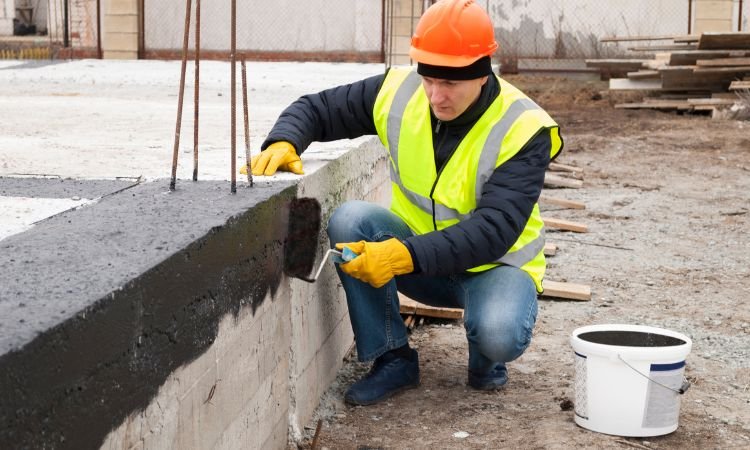The United States Waterproofing Market Size has witnessed remarkable growth in recent years and is expected to continue its upward trajectory, with a projected value of nearly USD 27.93 billion by 2032. This growth is driven by various factors, including an increase in construction activities, rising awareness of water damage prevention, and advancements in waterproofing technologies. In this article, we will explore the key benefits, driving and restraining factors, market segmentation, regional insights, major industry developments, and much more, providing an in-depth understanding of the market landscape.
Market Overview
The United States waterproofing market reached a value of nearly USD 18.33 billion in 2023. The demand for waterproofing solutions spans various sectors, including residential, commercial, and industrial, with applications in buildings, bridges, tunnels, and infrastructure projects. Waterproofing is essential in preventing water penetration, which can cause significant damage to structures, leading to high repair costs and potential safety risks. The market is projected to grow at a CAGR of 4.8% between 2024 and 2032, driven by increased construction activities, particularly in urban development, as well as advancements in material science.
Key Benefits of Waterproofing
- Protection Against Water Damage: Waterproofing ensures that buildings and infrastructure are protected from the adverse effects of water infiltration, such as mould, rust, and decay, which can deteriorate the integrity of structures over time.
- Energy Efficiency: Modern waterproofing materials often come with thermal insulation properties that improve the energy efficiency of buildings by reducing heat loss and minimizing the need for excessive heating or cooling.
- Enhanced Property Value: Waterproofing is a crucial factor in maintaining the aesthetic and structural integrity of buildings, enhancing their marketability and value. Properties that are well-maintained and protected against water damage often see higher resale values.
- Health and Safety: Waterproofing prevents the growth of mould and mildew, which can lead to respiratory issues and other health problems. It also reduces the risk of structural collapse caused by water-related damage.
- Longevity of Infrastructure: Waterproofing materials, when properly applied, can significantly extend the lifespan of structures, protecting them from the elements and minimizing the need for costly repairs or reconstruction.
Key Industry Developments
- Advancements in Waterproofing Technologies: Over the years, the waterproofing industry has seen significant advancements in materials and techniques. For example, the development of nano-coatings, which offer superior waterproofing properties, and the use of sustainable materials like bio-based sealants, have revolutionized the market.
- Increased Adoption of Green Building Practices: With the growing emphasis on sustainability and eco-friendly construction, the demand for environmentally-friendly waterproofing solutions has risen. Green building certifications such as LEED (Leadership in Energy and Environmental Design) often require the use of sustainable waterproofing materials.
- Focus on Smart Waterproofing Solutions: The advent of smart waterproofing technologies, including sensors that detect leaks and moisture, is transforming the industry. These technologies offer real-time monitoring and early warning systems, reducing the risk of water damage and allowing for timely intervention.
- Emerging Demand in Infrastructure Projects: Large-scale infrastructure projects, such as dams, tunnels, and bridges, are increasingly adopting advanced waterproofing techniques to ensure long-term durability and prevent water-related damage. The government’s emphasis on improving infrastructure is expected to drive demand in this sector.
Driving Factors
- Growing Construction Activities: The construction industry in the United States is experiencing rapid growth, driven by urbanisation, increasing population, and infrastructure renewal projects. This expansion boosts the demand for waterproofing solutions, particularly in new residential, commercial, and industrial projects.
- Rising Awareness of Water Damage Prevention: As the understanding of the long-term effects of water damage increases, property owners are becoming more proactive about waterproofing. Preventing issues like mould, corrosion, and structural degradation is seen as a critical measure in protecting property investments.
- Technological Innovations: The development of advanced waterproofing materials, including polyurethane-based coatings, bituminous membranes, and liquid-applied membranes, has made waterproofing more efficient and cost-effective. These innovations help meet the evolving demands of the construction and renovation sectors.
- Government Support for Infrastructure Development: The U.S. government has been heavily investing in infrastructure projects as part of various stimulus packages, including the American Jobs Plan. This push for large-scale construction and maintenance projects is a significant driver for the demand for waterproofing solutions.
Restraining Factors
- High Initial Costs: While waterproofing is crucial, the initial cost of high-quality materials and installation can be significant. This can deter some property owners and contractors from opting for premium waterproofing solutions, particularly in budget-sensitive projects.
- Lack of Awareness in Some Sectors: Despite the growing awareness in the residential and commercial sectors, some industries still lag in understanding the importance of waterproofing, particularly in older infrastructure or small-scale construction projects.
- Regulatory Challenges: The waterproofing industry is subject to various regulations, including building codes and environmental standards. Navigating these regulations can be time-consuming and costly for manufacturers and contractors, potentially hindering market growth.
Market Segmentation
The United States waterproofing market can be segmented based on several factors, including type of application, end-use industry, and materials used.
1. By Application
- Roof Waterproofing: One of the most common applications of waterproofing in the construction industry, roof waterproofing ensures that buildings are protected from leaks and water damage caused by rain, snow, or other external elements.
- Basement Waterproofing: Basement waterproofing is crucial in residential and commercial buildings to prevent flooding, dampness, and moisture-related issues in underground spaces.
- Exterior Walls: Protecting exterior walls from water penetration is essential to maintaining the aesthetic and structural integrity of buildings, especially in regions with high rainfall or humidity.
- Tunnels and Bridges: Waterproofing for infrastructure projects like tunnels, roads, and bridges is critical for ensuring long-term durability and safety, particularly in areas with fluctuating weather conditions.
2. By Materials
- Bituminous Coatings: These are the most commonly used waterproofing materials, particularly in roofing and foundation applications. Bituminous coatings offer excellent waterproofing properties and durability.
- Polyurethane Coatings: Known for their superior waterproofing capabilities, polyurethane-based coatings are often used in applications where flexibility and long-lasting protection are required.
- Cementitious Waterproofing: This category includes products that use cement as the primary ingredient for waterproofing. Cementitious waterproofing is widely used in basements and foundations.
- Liquid Membranes: Liquid-applied membranes are gaining popularity due to their ability to create seamless, protective layers over surfaces, offering high flexibility and ease of application.
3. By End-Use Industry
- Residential: The residential sector continues to be the largest end-use segment for waterproofing solutions, driven by the growing number of new homes and renovation projects.
- Commercial: Commercial buildings, including office complexes, shopping centres, and warehouses, require waterproofing solutions to protect structural integrity and reduce maintenance costs.
- Industrial: The industrial sector demands waterproofing for a range of facilities, including factories, power plants, and warehouses, where water damage could disrupt operations or pose safety risks.
Regional Insights
The demand for waterproofing solutions is not uniform across the United States. Key regions driving the market include:
- Northeast: The Northeast is a major market for waterproofing solutions, particularly due to its aging infrastructure, which requires consistent maintenance. Urban renewal and ongoing construction projects in cities like New York and Boston also boost the demand.
- South: The Southern U.S. experiences high humidity levels and frequent rainfall, increasing the need for effective waterproofing solutions, especially in residential and commercial buildings.
- West: The West, particularly California, is witnessing strong demand due to growing urban development and the rising focus on eco-friendly and sustainable building materials.
Key Players in the United States Waterproofing Market
- Sika AG
- BASF SE
- MAPEI SPA
- DuPont de Nemours, Inc.
- Johns Manville
- LATICRETE International, Inc.
- W. R. Meadows, Inc
Opportunities and Challenges
Opportunities:
- Sustainable Waterproofing Solutions: With an increasing focus on eco-friendly construction, there is a growing opportunity for manufacturers to develop and promote sustainable waterproofing materials.
- Smart Waterproofing Systems: The integration of smart technologies, including IoT-based monitoring systems for early leak detection, presents a major opportunity for growth.
Challenges:
- Cost Sensitivity: Despite the long-term benefits, the upfront cost of high-quality waterproofing solutions can limit adoption, especially in the commercial and residential sectors.
- Regulatory Constraints: Keeping up with evolving regulatory standards and building codes can be challenging for companies operating in this space.



